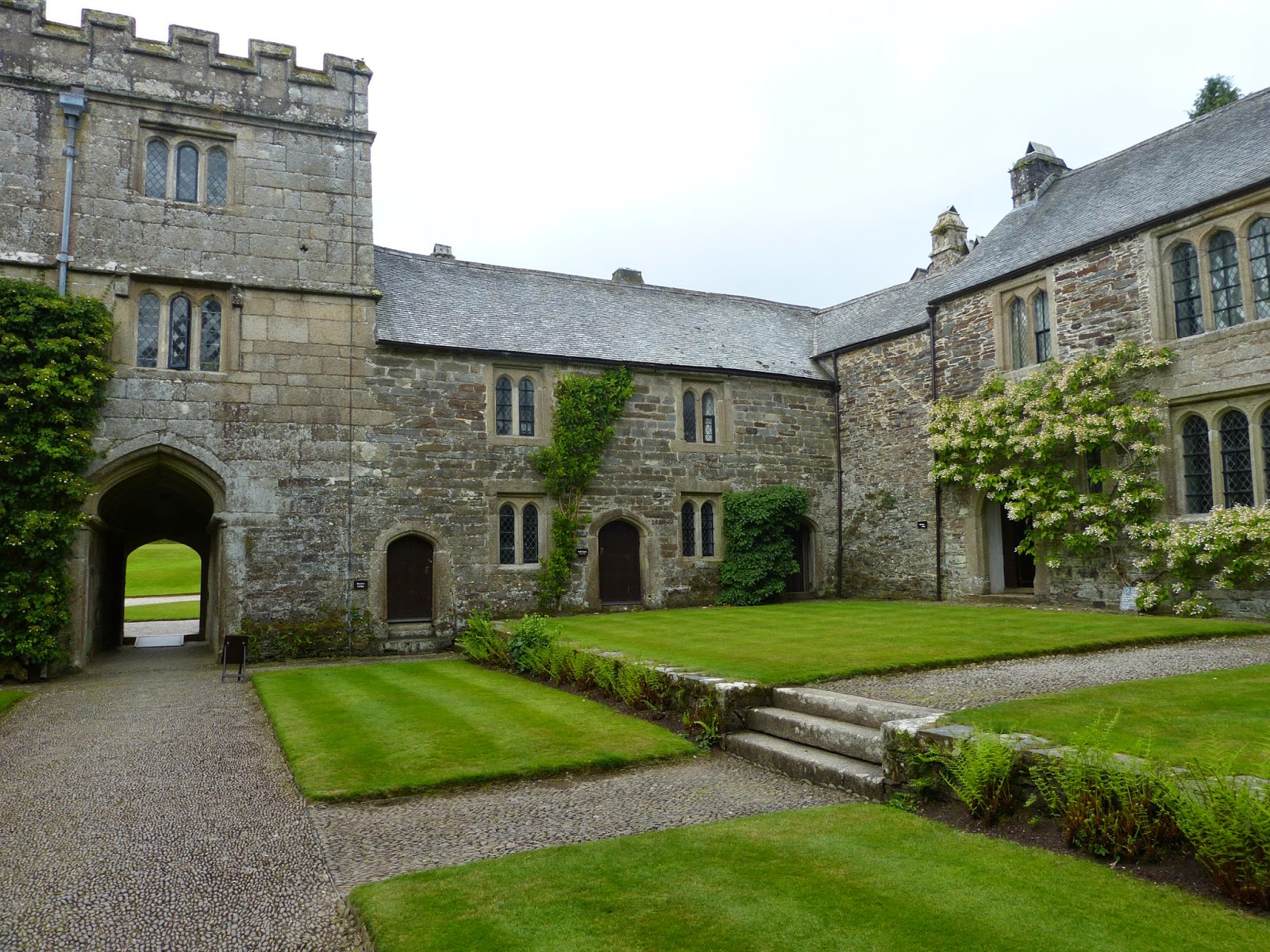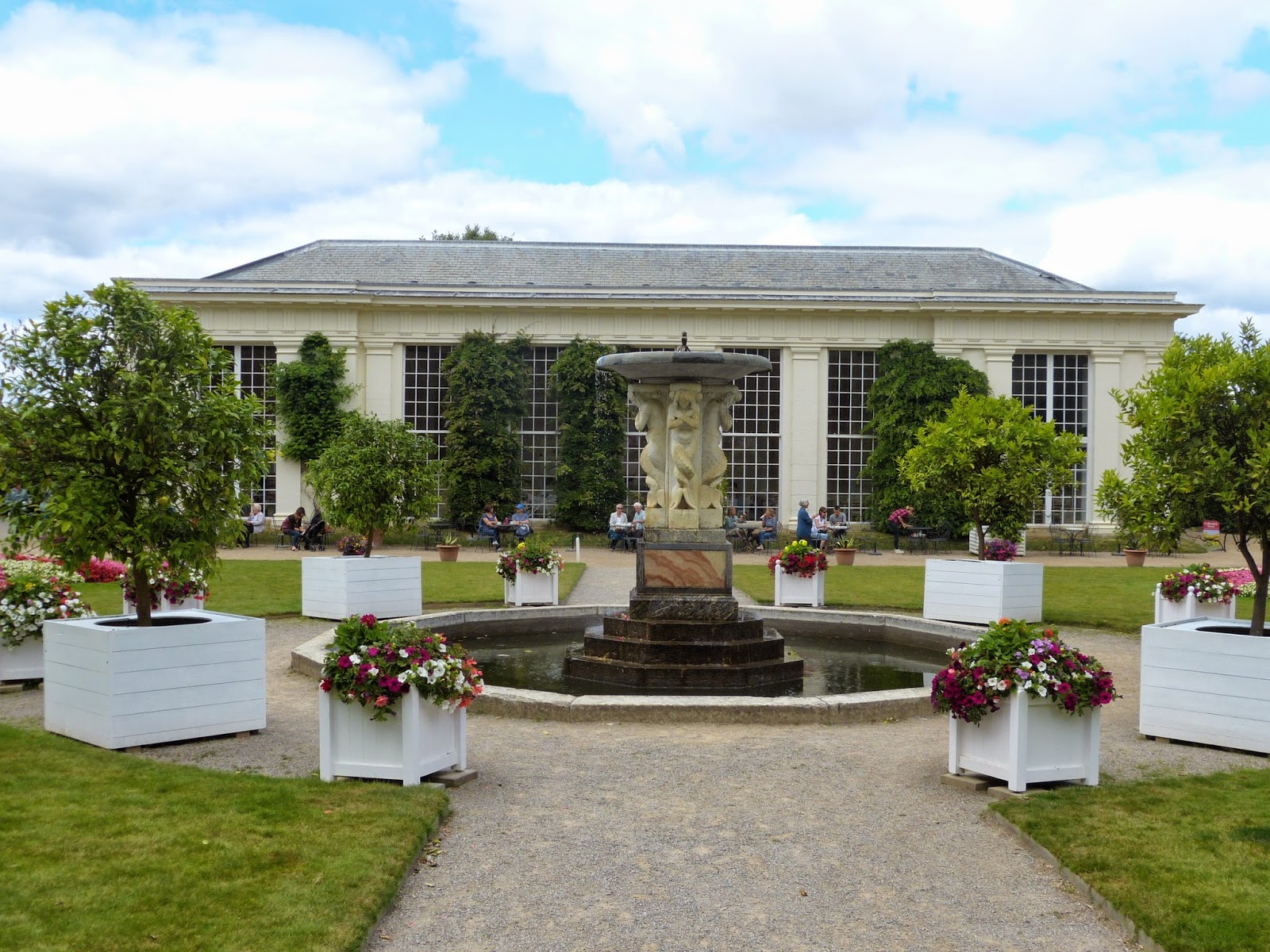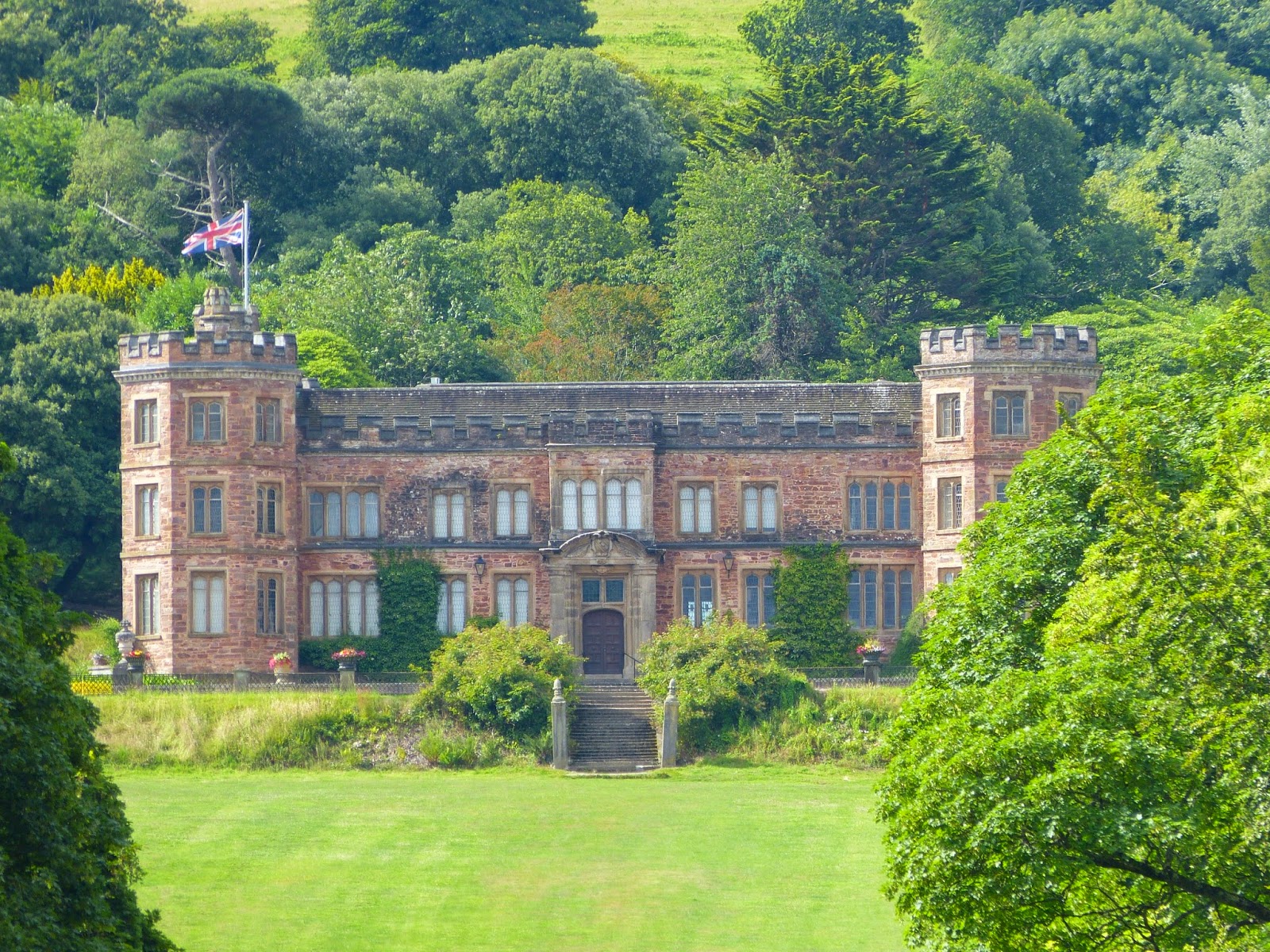 |
| Mount Edgcumbe (2014) |
Mount Edgcumbe is a Tudor mansion in South East Cornwall.
History
In 1515, Henry VIII granted permission to Sir Piers Edgcumbe to enclose a deer park on his land on a peninsula in South East Cornwall. His son, Sir Richard Edgcumbe, built Mount Edgcumbe House on this land between 1547 and 1553 and moved there from his previous home, Cotehele.
 |
| The courtyard at Cotehele |
Mount Edgcumbe was built according to a forward-thinking design for the time with the rooms constructed around a central hall rather than a courtyard and focused on looking outwards rather than inwards.
During the Second World War, Mount Edgcumbe was bombed; the west wing was destroyed and most of the contents were ravaged by fire. Between 1958 and 1964, it was rebuilt in 18th century style by the 6th Earl, but in 1971, the house and surrounding area was sold for use as a country park. The property was bought by Cornwall and Plymouth City Councils and operates today under their joint management.
 |
| View from Mount Edgcumbe |
Richard Edgcumbe, 1st Baron Edgcumbe (1680-1758)
Richard Edgcumbe was educated at Trinity College Cambridge and was a close friend of Robert Walpole. He was an active MP and held various offices, including Lord of the Treasury, Chancellor of the Duchy of Lancaster and Lord Lieutenant of Cornwall. He was made Baron Edgcumbe on 20 April 1742.
Richard was an early patron of Sir Joshua Reynolds and arranged for him to travel to Italy in 1749 to study art. Sir Joshua painted many portraits for the Edgcumbe family, but the majority of these were destroyed when Mount Edgcumbe was bombed.
 |
| Sir Joshua Reynolds from The Literary Works of Sir Joshua Reynolds by HW Beechey (1852) |
Richard has two sons, Richard and George:
Richard Edgcumbe, 2nd Baron Edgcumbe (1716-1761)
Richard, known as Dick, was a close friend of Horace Walpole and the black sheep of the family. He was witty and charming but an inveterate gambler. He kept a succession of mistresses rather than settling down with a wife and had four children with one of them, Mrs Ann Franks Day. It was perhaps his unsavoury reputation that led to his portrait not being on the wall when Mount Edgcumbe was bombed and so it survived.
Dick went on the Grand Tour for around seven years and reputedly brought back the first orange trees to Mount Edgcumbe.
 |
| Italian garden with mermaid fountain and the Orangery |
George was among the first pupils to graduate from the Royal Naval College at Portsmouth and saw action at the Siege of Louisbourg (1758) and the Battle of Quiberon Bay (1759).
He succeeded his brother as Baron Edgcumbe in 1761 and married Emma Gilbert, the somewhat eccentric daughter of the Archbishop of York by whom he had one son, Richard. Emma was notorious for her card playing and for keeping a pet pig called Cupid who ate at her table. She was a popular target for caricaturists, most famously James Gillray in A witch, upon a mount’s edge (1791).
 |
| A witch, upon a mount's edge. - Vide: Fuzelli by James Gillray Pub Hannah Humphrey (1791) © British Museum |
George was interested in antiquities and science and a patron of artists such as Sir Joshua Reynolds and John Opie. Many well-known people visited him at Mount Edgcumbe including Horace Walpole, Dr Johnson, Captain Cook, Sir Joshua Reynolds and David Garrick.
George III and Queen Charlotte visited Mount Edgcumbe in August 1789, during their stay at Saltram in Plymouth.
In 1780, George allowed more than a hundred trees to be felled to make room for a battery. He was rewarded by being made Viscount Mount Edgcumbe on 5 March 1781. After the King's visit, he was made Earl of Mount Edgcumbe on 31 August 1789.
Richard Edgcumbe, 2nd Earl of Edgcumbe (1764-1839)
Richard was an active MP, supporting the government of William Pitt. In 1789, he gained the courtesy title of Viscount Valletort when his father was made Earl of Mount Edgcumbe. He entered the House of Lords in 1795 after inheriting the earldom and became a member of the Privy Council in 1808.
In 1789, Richard married Lady Sophia Hobart of Bickling Hall, Norfolk, and they had five (1) children. Sophia was known as one of Pharaoh’s daughters because she kept a faro table.
 |
| Memorial to Sophia in the French garden |
Richard was a keen amateur actor and musician and wrote a prologue for a performance at Strawberry Hill in 1800. He wrote Musical Reminiscences of the Earl of Mount Edgcumbe (1823) about Italian operas in England and an opera, Zenobia (1801).
Richard and Sophia had a keen interest in gardening and they developed the Italian (1785) and French (1803) gardens at Mount Edgcumbe. The mermaid fountain in the Italian garden was a gift from Richard’s godfather, Lord Bessborough, in 1809. They also developed drives around the estate.
 |
| Italian garden, Mount Edgcumbe |
The grounds are extensive - make sure you take a map with you if you go walking as we found the footpaths inadequately signposted and walked much farther than we had intended! When we visited in 2014, it was possible to explore some of the area on a Segway adventure.
• Externally, the main part of the original Tudor building, but not as it would have been seen in Georgian times – it used to be rendered white.
 |
| Mount Edgcumbe |
• Internally, the house as it was rebuilt in the 1950s/60s. (The only photography allowed in the house was of visitors dressed up in the Tudor and Georgian clothes, so, of course, I dressed up in a Georgian outfit.) The current building allows you to get a feel for the original design, with rooms off a central hall, but it was not rebuilt to replicate the original and I looked in vain for the pillars in the hall which were depicted in a painting from 1749.
 |
| Rachel in Georgian costume inside Mount Edgcumbe House (2014) |
• The portrait of Richard Edgcumbe, 2nd Baron, by Sir Joshua Reynolds.
• Acres of beautiful parkland, with stunning views of the sea and a number of Georgian buildings such as the Picklecombe Seat (c1788).
 |
| Picklecombe Seat |
• The formal gardens including the Italian garden with the mermaid fountain (shown above).
• The Tudor Blockhouse in the lower park.
 |
| Tudor blockhouse |
Note
(1) Wikipedia lists five children but the family tree in the Cotehele guidebook only shows four.
Sources used include:
Brown, Cynthia Gaskell Brown, editing and additional text by Marshall, David, Cairns, Jo and Berry, Ian, Mount Edgcumbe House and Country Park Guidebook (Purchased 2014)
Hunt, Rachel, ed by Anna Groves, Cotehele, National Trust Guide (2013)
All photographs © Andrew Knowles - www.flickr.com/photos/dragontomato

Mount Edgcumbe plays a role in the climax of my Regency novel "The First Wives' Club." It was great to revisit the research I did on the estate and park. Plus, I learned something new of the earl.
ReplyDeleteThanks, Regina. I'm glad you enjoyed the post. I love writing about real places in fiction as well as in factual posts like this. :)
DeleteMay I point out, if you were not aware [and if you were, my apologies] that although the crenellations on the building are plainly ornamental, when it was built a licence to crenellate was still required AND cost a small fortune as well as needing the favour of the king. Those decorative crinkle-crankles are serious signs of political favour and conspicuous consumption. Fascinating post as your posts always are.
ReplyDeleteThanks for your comments, Sarah. I was aware that you needed a licence to crenellate but only because one of my daughters is studying buildings as part of her archaeology degree! Clearly the owners of Mount Edgcumbe were in receipt of plenty of royal favour. :)
Deletein the peach polonaise I donated as a thank you for using the grounds for a photoshoot!
ReplyDeleteWhat a lovely way to say thank you. I certainly appreciated the dress - it's lovely. :)
DeleteCotehele and Mount Edgcumbe are the setting of my Regency, Smugglers' Summer, still available as an ebook.
ReplyDeleteLove your posts. Thanks.
ReplyDelete